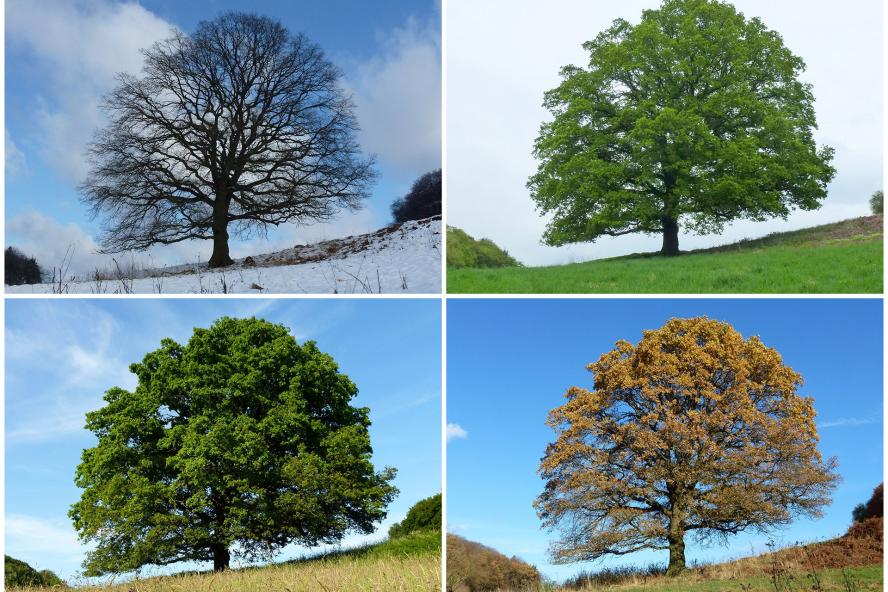Seasonality, Adaptation, & Resilience
Organisms are forced to cope with seasonal environments in nearly every habitat on Earth (Fig. 2). Species commonly alter their physiology, morphology, or behavior to survive harsh seasons such as winter, and many display tremendous flexibility in the timing of these transitions to align with local climate conditions (e.g., a longer or shorter winter). Extensive progress has been made in understanding seasonal timing in plant systems like Arabidopsis and corn, but our understanding in animals is still somewhat limited because many animal model systems have weak seasonal responses. This gap has become alarming because there are now firm links between the capacity to adjust the seasonal timing of life’s key events and local extinction risk in diverse organisms, including species of conservation concern (e.g., pollinators) and those important for human health (e.g., pests, vectors). We are using a non-model insect with a robust seasonal response to better understand the evolutionary processes and molecular mechanisms underlying seasonal timing, as well as possible links with population persistence. Our results thus far highlight an important role for the circadian clock gene pathway, suggesting that a single set of genes could be governing how animals respond to daily and yearly environmental change.

Fig. 2. An example of organismal response to seasonal change at a temperate habitat. Attribution: J. Hagelüken, CC BY-SA 4.0
Selected Publications
- Michielini, J.P., Dopman, E.B. and Crone, E.E., 2021. Changes in flight period predict trends in abundance of Massachusetts butterflies. Ecology Letters, 24(2), pp.249-257.
- Wadsworth, C.B., Okada, Y. and Dopman, E.B., 2020. Phenology-dependent cold exposure and thermal performance of Ostrinia nubilalis ecotypes. BMC Evolutionary Biology, 20(1), pp.1-14.
- Kerr, N.Z., Wepprich, T., Grevstad, F.S., Dopman, E.B., Chew, F.S. and Crone, E.E., 2020. Developmental trap or demographic bonanza? Opposing consequences of earlier phenology in a changing climate for a multivoltine butterfly. Global Change Biology, 26(4), pp.2014-2027.
- Yu, Y., Huang, L.L., Xue, F.S. and Dopman, E.B., 2023. Partial reuse of circadian clock genes along parallel clines of diapause in two moth species. Molecular Ecology, 32(13), pp.3419-3439.
- Levy, R.C., Kozak, G.M., Wadsworth, C.B., Coates, B.S. and Dopman, E.B., 2015. Explaining the sawtooth: latitudinal periodicity in a circadian gene correlates with shifts in generation number. Journal of Evolutionary Biology, 28(1), pp.40-53.
- Wadsworth, C.B., Woods Jr, W.A., Hahn, D.A. and Dopman, E.B., 2013. One phase of the dormancy developmental pathway is critical for the evolution of insect seasonality. Journal of Evolutionary Biology, 26(11), pp.2359-2368.